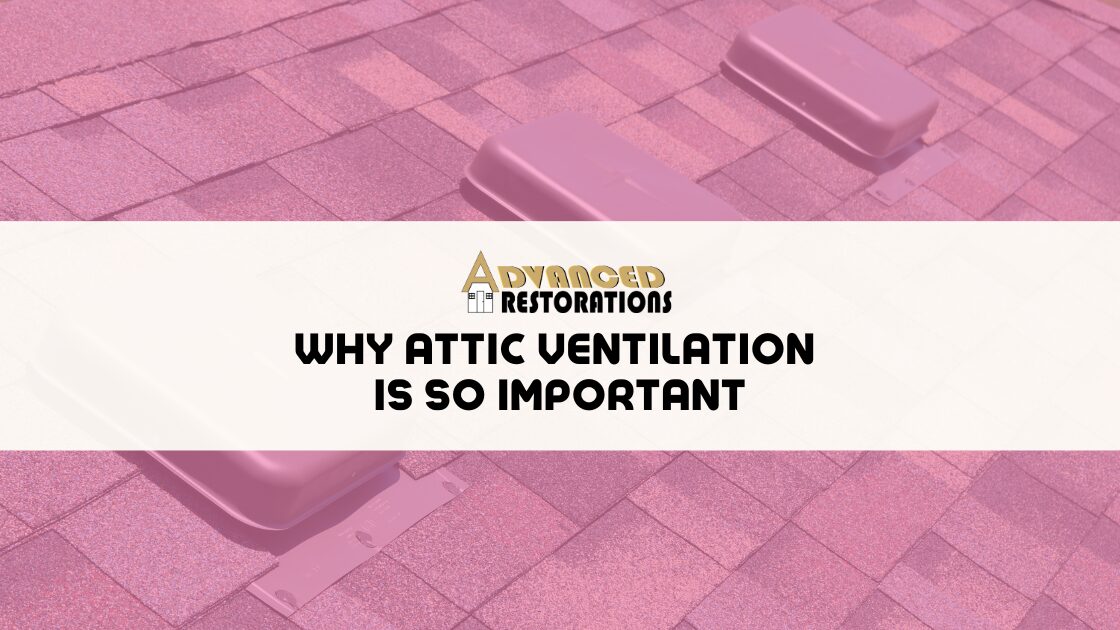
Why Attic Ventilation is SO Important
There are numerous reasons that an attic needs to have proper ventilation ranging from minimizing moisture and preventing mold to protecting the life of the roofing system. The detrimental effects of improper or inadequate attic ventilation can be both unattractive and structurally compromising over time, so it is paramount that homeowners understand the importance of proper attic ventilation. Inadequate attic ventilation can lead to warped roof decks, premature shingle aging, moldy roof decks, and roofing system fastener corrosion. All the issues listed will lead to reduced effectiveness of a roofing system as well as costly structural repairs that can easily be avoided. Before we dive into proper attic ventilation, let’s talk about how moisture finds its way to the attic.
Moisture will typically find its way into an attic through the form of water vapor. Water vapor is water in the form of an invisible gas. No matter the season, air contains some amount of water vapor and the maximum amount of water vapor that may be stored in the air is referred to as saturation moisture content 100% relative humidity. It is important to note that warmer air naturally holds more water vapor than cool air.
We now know that air holds water or moisture, so how does this water or moisture find its way into an attic? The answer is multifaceted and there are three general sources of attic moisture. The three general sources are outside sources, inside sources, and construction sources. Outside sources are going to simply be the moisture in the atmosphere. Whether it is in the form of rain or humidity or moisture in the soil, these external items are what constitute outside sources. Inside sources are items like bathrooms, kitchens, appliances, plants, and even the occupants of the home. It is estimated that the typical family of four will produce 1.3 gallons/day of water through respiration and perspiration. The last source is construction sources, and these are typically a factor within the first few years of a home being built. Construction sources are water content in wood and concrete that is present in new homes. The three sources of attic moisture can lead to mold, fastener corrosion, roof sheathing staining, and deterioration of the roof sheathing; and all these consequences can be avoided with a properly ventilated attic.
You may be wondering what a properly ventilated attic will look like, and the answer is simple. A properly ventilated attic will consist of both intake and outtake ventilation following the 1:300 rule — 1 square foot of net free vent area for every 300 square feet of attic space. This allows the exchange of hot air in the attic with cooler outdoor air which will lead to longer roofing system lifespans and help promote energy efficiency by helping to reduce the load put on HVAC systems. A properly ventilated attic will also qualify homeowners for extended warranties through material manufacturers of roofing products due to the following of installation instructions and specifications.
As you have read, there are many reasons why attic ventilation is so important. A properly ventilated attic will minimize costly repairs resulting from warped roof decks, premature shingle aging, moldy roof decks, and roofing system fastener corrosion as well as promote greater energy efficiency by helping to remove large loads from HVAC systems.
If you are concerned about the attic ventilation at your home, contact Advanced Restorations today at (417) 229-0667 to schedule time with one of our quality Field Supervisors – they can help verify whether the attic ventilation at your home is adequate and help ensure that your home is staying healthy for years to come.
